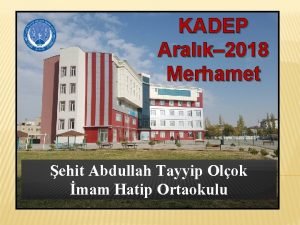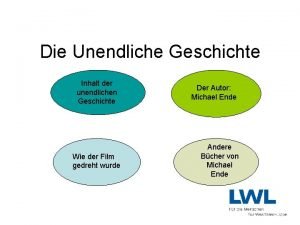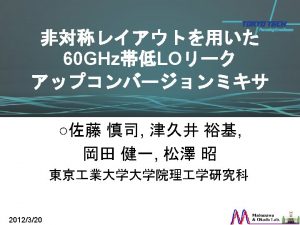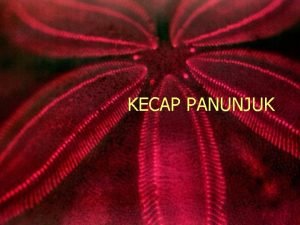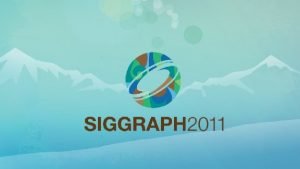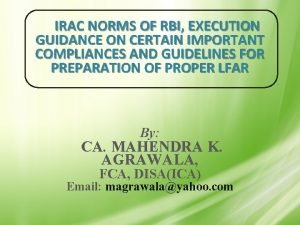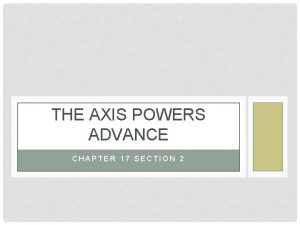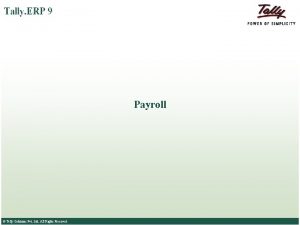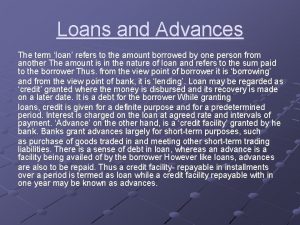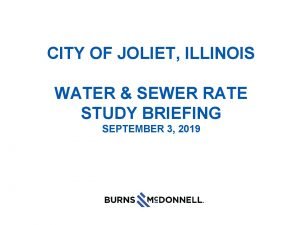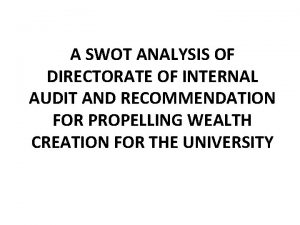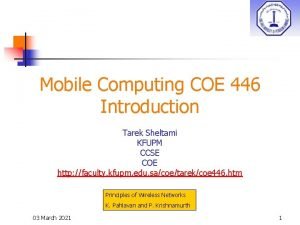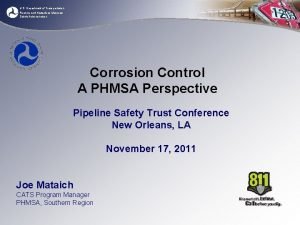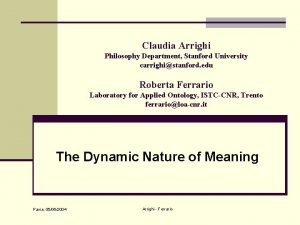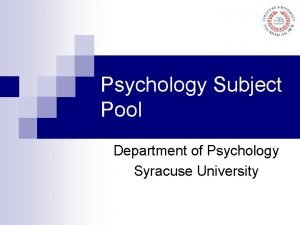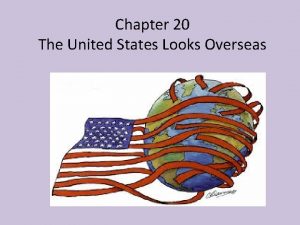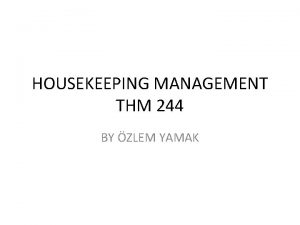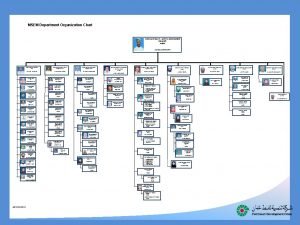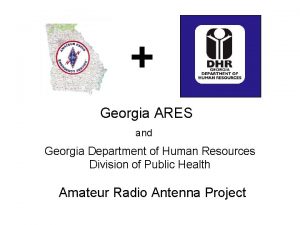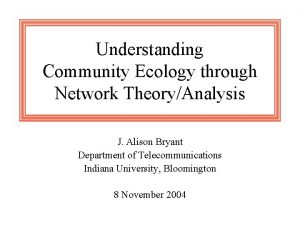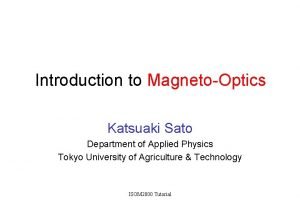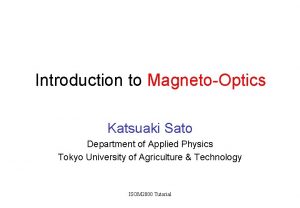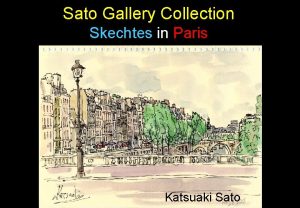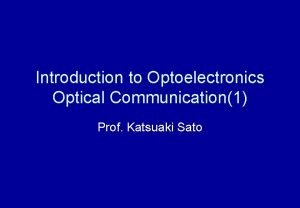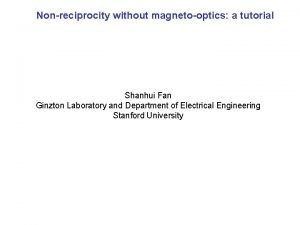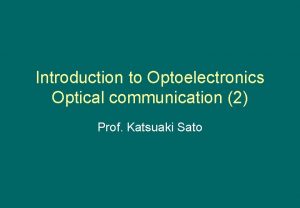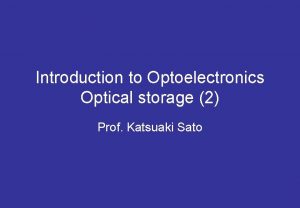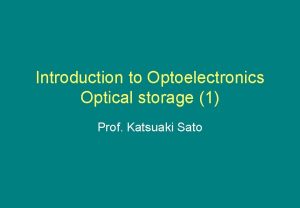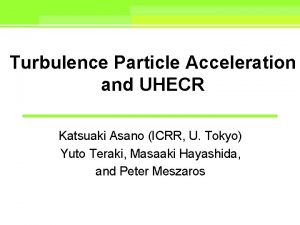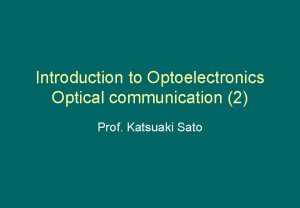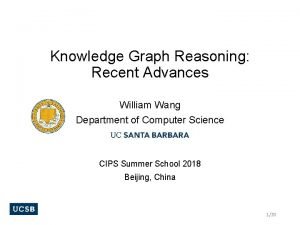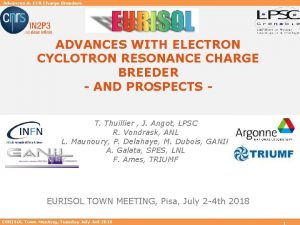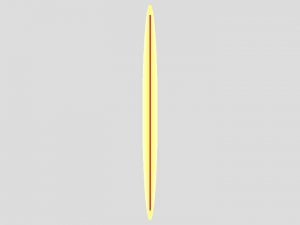Recent Advances in MagnetoOptics Katsuaki Sato Department of




































































































- Slides: 100

Recent Advances in Magneto-Optics Katsuaki Sato Department of Applied Physics Tokyo University of Agriculture & Technology ICFM 2001 Crimia October 1 -5, 2001

CONTENTS 1. 2. 3. Introduction Fundamentals of Magneto-Optics Magneto-Optical Spectra • 4. Recent Advances in Magneto-Optics • • • 5. Magneto-optics in nano-structures Nonlinear magneto-optical effect Scanning near-field magneto-optical microscope Current Status in Magneto-Optical Devices • • • 6. Experiments and theory Magneto-optical disk storages Magneto-optical isolators for optical communication Other applications Summary ICFM 2001 Crimia October 1 -5, 2001

1. Introduction • Magneto-Optical Effect:Discovered by Faraday on 1845 • Phenomenon:Change of Linear Polarization to Elliptically Polarized Light Accompanied by Rotation of Principal Axis • Cause:Difference of Optical Response between LCP and RCP • Application: – – Magneto-Optical Disk Optical Isolator Current Sensors Observation Technique ICFM 2001 Crimia October 1 -5, 2001

2. Fundamentals of Magneto-Optics • MO Effect in Wide Meaning Any change of optical response induced by magnetization • MO Effect in Narrow Meaning Change of intensity or polarization induced by magentization – Faraday effect – MOKE(Magneto-optical Kerr effect) – Cotton-Mouton effect ICFM 2001 Crimia October 1 -5, 2001

2. 1 Faraday Effect • (a) Faraday Configuration: – Magnetization // Light Vector • (b)Voigt Configuration: – Magnetization Light Vector ICFM 2001 Crimia October 1 -5, 2001

Faraday Effect • MO effect for optical transmission – Magnetic rotation(Faraday rotation) F – Magnetic Circular Dichroism(Faraday Ellipticity) F • Comparison to Natural Optical Rotation – Faraday Effect is Nonreciprocal (Double rotation for round trip) – Natural rotation is Reciprocal (Zero for round trip) • Verdet Constant – F=Vl. H (For paramagnetic and diamagnetic materials) ICFM 2001 Crimia October 1 -5, 2001

Illustration of Faraday Effect Rotation of Principal axis For linearly polarized light incidence, Elliptically Polarized light Linearly polarized light • Elliptically polarized light goes out (MCD) • With the principal axis rotated (Magnetic rotation) ICFM 2001 Crimia October 1 -5, 2001

Faraday rotation of magnetic materials Materials Fe rotation (deg) 3. 825・ 105 figure of merit(deg/d. B) wavelength (nm) 578 Co 1. 88・ 105 Ni 1. 3・ 105 Y 3 Fe 5 O 12 temperature (K) RT Mag. field (T) 2. 4 546 〃 2 826 120 K 0. 27 250 1150 100 K Gd 2 Bi. Fe 5 O 12 1. 01・ 104 44 800 RT Mn. Sb 2. 8・ 105 500 〃 Mn. Bi 5. 0・ 105 1. 43 633 〃 YFe. O 3 4. 9・ 103 633 〃 Nd. Fe. O 3 4. 72・ 104 633 〃 Cr. Br 3 1. 3・ 105 500 1. 5 K Eu. O 5・ 105 104 660 4. 2 K 2. 08 Cd. Cr 2 S 4 3. 8・ 103 35(80 K) 1000 4 K 0. 6 ICFM 2001 Crimia October 1 -5, 2001

2. 2 Magneto-Optical Kerr Effect • Three kinds of MO Kerr effects – Polar Kerr(Magnetization is oriented perpendicular to the suraface) – Longitudinal Kerr(Magnetization is in plane and is parallel to the plane of incidence) – Transverse Kerr (Magnetization is in plane and is perpendicular to the plane of incidence) ICFM 2001 Crimia October 1 -5, 2001

Magneto-optical Kerr effect M M M Polar Longitudinal Transverse ICFM 2001 Crimia October 1 -5, 2001

MO Kerr rotation of magnetic materials Materials rotation Photon energy temperature field (deg) (e. V) (K) (T) Fe 0. 87 0. 75 RT Co 0. 85 0. 62 〃 Ni 0. 19 3. 1 〃 Gd 0. 16 4. 3 〃 Fe 3 O 4 0. 32 1 〃 Mn. Bi 0. 7 1. 9 〃 Pt. Mn. Sb 2. 0 1. 75 1. 7 Co. S 2 1. 1 0. 8 〃 4. 2 Cr. Br 3 3. 5 2. 9 4. 2 Eu. O 6 2. 1 12 USb 0. 8 Te 9. 0 0. 8 10 4. 0 0. 2 Co. Cr 2 S 4 4. 5 0. 7 80 a-Gd. Co * 0. 3 1. 9 RT Ce. Sb 90 2 ICFM 2001 Crimia October 1 -5, 2001 0. 4

2. 3 Electromagnetism and Magnetooptics • Light is the electromagnetic wave. • Transmission of EM wave:Maxwell equation • Medium is regareded as continuum→dielectric permeability tensor – Effect of Magnetic field→mainly to off-diagonal element • Eigenequation • →Complex refractive index:two eigenvalues eigenfunctions:right and left circularpolarization – Phase difference between RCP and LCP→rotation – Amplitude difference →circular dichroism ICFM 2001 Crimia October 1 -5, 2001

Dielectric tensor Isotromic media;M//z Invariant C 4 for 90°rotation around z-axis ICFM 2001 Crimia October 1 -5, 2001

MO Equations (1) Maxwell Equation Eigenequation Eigenvalue Eigenfunction:LCP and RCP Without off-diagonal terms:No difference between LCP & RCP No magnetooptical effect ICFM 2001 Crimia October 1 -5, 2001

MO Equations (2) Both diagonal and off-diagonal terms contribute to Magneto-optical effect ICFM 2001 Crimia October 1 -5, 2001

Phenomenology of MO effect Linearly polarized light can be decomposed to LCP and RCP Difference in phase causes rotation of the direction of Linear polarization Difference in amplitudes makes Elliptically polarized light In general, elliptically polarized light With the principal axis rotated ICFM 2001 Crimia October 1 -5, 2001

2. 4 Electronic theory of Magneto. Optics • Magnetization→Splitting of spin-states – No direct cause of difference of optical response between LCP and RCP • Spin-orbit interaction→Splitting of orbital states – Absorption of circular polarization→Induction of circular motion of electrons • Condition for large magneto-optical response – Presence of strong (allowed) transitions – Involving elements with large spin-orbit interaction – Not directly related with Magnetization ICFM 2001 Crimia October 1 -5, 2001

Dielectric functions derived from Kubo formula where ICFM 2001 Crimia October 1 -5, 2001

Microscopic concepts of electronic polarization Wavefunction perturbed by electric field E + + - Unperturbed wavefunction + - = + + S-like + ・・ P-like Expansion by unperturbed orbitals ICFM 2001 Crimia October 1 -5, 2001

Orbital angular momentum-selection rules and circular dichroism px-orbital py-orbital Lz=+1 p+=px+ipy Lz=-1 p-=px-ipy Lz=0 ICFM 2001 Crimia October 1 -5, 2001 s-like

Role of Spin-Orbit Interaction Jz=-3/2 Jz=-1/2 L=1 LZ=+1, 0, -1 L=0 Without magnetization LZ=0 Exchange splitting ICFM 2001 Crimia October 1 -5, 2001 Jz=+1/2 Jz=+3/2 Jz=-1/2 Jz=+1/2 Exchange +spin-orbit

MO lineshapes (1) 1. Diamagnetic lineshape Excited state ”xy ’xy Lz=-1 0 Lz=+1 1 2 1+2 Ground state Lz=0 Without magnetization With magnetization Photon energy ICFM 2001 Crimia October 1 -5, 2001 Photon energy

MO lineshapes (2) 2. Paramagnetic lineshape excited state 0 f+ f- dielectric constant f=f+ - f ’xy ”xy ground state without magnetic field with magnetic field photon energy (b) (a) ICFM 2001 Crimia October 1 -5, 2001

3. Magneto-Optical Spectra • • Measurement technique Magnetic garnets Metallic ferromagnet:Fe, Co, Ni Intermetallic compounds and alloys:Pt. Mn. Sb etc. Magnetic semiconductor:Cd. Mn. Te etc. Superlattices:Pt/Co, Fe/Au etc. Amorphous:Tb. Fe. Co, Gd. Fe. Co etc. ICFM 2001 Crimia October 1 -5, 2001

Measurement of magneto-optical spectra using retardation modulation technique i Light source monochro mator filter B chopper ellipsoidal mirror polarizer j eletromagnet sample analyzer detector computer /4 P D PEM quartz Piezo e cryst lectric al A Isotropic medium fused silica Ca. F 2 Ge etc. Retardation =(2 / ) nl sin pt = 0 sin pt amp litud l e pos it ion ICFM 2001 Crimia October 1 -5, 2001

Magnetic garnets • One of the most intensively investigated magnetooptical materials • Three different cation sites; octahedral, tetrahedral and dodecahedral sites • Ferrimagnetic • Large magneto-optical effect due to strong charge -transfer transition • Enhancement of magneto-optical effect by Bisubstitution at the dodecahedral site ICFM 2001 Crimia October 1 -5, 2001

Electronic level diagram of Fe 3+ in magnetic garnets Jz= J=7/2 6 P ( 6 T 6 2, T 1 g) 5 /2 - 3/2 7/2 -3/2 -7/2 3/2 -3/2 J=5/2 -3 /2 J=3/2 P+ P+ P- P- 6 S (6 A , 6 A ) 1 1 g without perturbation spin-orbit interaction -5/2 tetrahedral crystal field (Td) ICFM 2001 Crimia October 1 -5, 2001 octahedral crystal field (Oh)

Experimental and calculated magneto-optical spectra of Y 3 Fe 5 O 12 Faraday rotation (arb. unit) 0. 8 experiment +2 0 0. 4 -2 calculation 0 -0. 4 300 400 500 Wavelength (nm) ICFM 2001 Crimia October 1 -5, 2001 600 Faraday rotation (deg/cm) x 104

Electronic states and optical transitions of Co 2+ and Co 3+ in Y 3 Fe 5 O 12 (a) (b) ICFM 2001 Crimia October 1 -5, 2001

Theoretical and experimental magnetooptical spectra of Co-doped Y 3 Fe 5 O 12 ICFM 2001 Crimia October 1 -5, 2001

Theoretical and experimental MO spectra of bcc Fe Krinchik Katayama theory ICFM 2001 Crimia October 1 -5, 2001

MO spectra of Pt. Mn. Sb Magneto-optical Kerr rotation θK and ellipticity ηK (a) Diagonal dielectric functions (b) ICFM 2001 Crimia October 1 -5, 2001 Off-diagonal Dielectric function (c)

Comparison of theoretical and experimental spectra of half-metallic Pt. Mn. Sb (a) (b) (c) After Oppeneer (d) ICFM 2001 Crimia October 1 -5, 2001

Faraday rotation spectra (deg) Magneto-optical spectra of Cd. Mn. Te Photon Energy (e. V) ICFM 2001 Crimia October 1 -5, 2001

Pt/Co superlattices Pt(10)/Co(5) Pt(18)/Co(5) simulation experiment Pt(40)/Co(20) Photon energy (e. V) Kerr rotation and ellipticity(min) Pt. Co alloy rotation elliptoicity Photon energy (e. V) ICFM 2001 Crimia October 1 -5, 2001

MO spectra in RE-TM (1) Polar Kerr rotation (min) Wavelength (nm) ICFM 2001 Crimia October 1 -5, 2001

MO spectra in R-Co Wavelength (nm) 300 Polar Kerr rotation (deg) 0 400 500 600 700 -0. 2 -0. 4 -0. 6 5 4 3 Photon Energy (e. V) ICFM 2001 Crimia October 1 -5, 2001 2

MO spectra of Fe/Au superlattice ICFM 2001 Crimia October 1 -5, 2001

Calculated MO spectra of Fe/Au superlattice By M. Yamaguchi et al. ICFM 2001 Crimia October 1 -5, 2001

Au/Fe/Au sandwich structure By Y. Suzuki et al. ICFM 2001 Crimia October 1 -5, 2001

4. Recent Advances in Magneto-Optics • Nonlinear magneto-optics • Scanning near-field magneto-optical microscope (MO-SNOM) • X-ray magneto-optical Imaging ICFM 2001 Crimia October 1 -5, 2001

NOMOKE (Nonlinear magneto-optical Kerr effect) • Why SHG is sensitive to surfaces? • Large nonlinear magneto-optical effect • Experimental results on Fe/Au superlattice • Theoretical analysis • Future perspective ICFM 2001 Crimia October 1 -5, 2001

MSHG Measurement System LD pump SHG laser Electromagnet =810 nm Pulse=150 fs =532 nm Ti: sapphire P=600 m. W Mirror rep 80 MHz laser Filter Stage controller Berek compensator Mirror Sample Analyzer Lens Filter PMT lens Chopper polarizer Photon counting Photon counter Computer ICFM 2001 Crimia October 1 -5, 2001

Sample 試料回転 Sample stage Pole p ie Rotating analyzer Filter 2 w (405 nm) w (810 nm) P-po larize d or S polar ized 45° light ce w (810 nm) Analyzer Optical arrangements ICFM 2001 Crimia October 1 -5, 2001

Azimuthal dependence of ・ Linear optical response ( =810 nm) The isotropic response for the azimuthal angle ・ Nonlinear optical response ( =405 nm) The 4 -fold symmetry pattern Azimuthal pattern show 45 -rotation by reversing the magnetic field G H S SHG intensity (counts/10 sec. ) li (a) Linear (810 nm) 45 SHG intensity (counts/10 sec. ) M r a e n (b) SHG (405 nm) [Fe(3. 75 ML)/Au(3. 75 ML)] 超格子の (P in Pout)配置の線形および非線形の方位角依存性 ICFM 2001 Crimia October 1 -5, 2001

Calculated and experimental patterns : x=3. 5 SHG intensity (counts/10 sec. ) (a) Pin-Pout 103 (b) Pin-Sout Dots:exp. Solid curve:calc. 103 APP=1310, B=26, C=-88 APS=-300, B=26, C=-88 (c) Sin-Pout (d) Sin-Sout 103 ASP=460, B=26, C=-88 ASS=100, B=26, C=-88 ICFM 2001 Crimia October 1 -5, 2001

Nonlinear Kerr Effect Electromagnet f = 31. 1° S-polarized light ω(810 nm) Rotating Analyzer 45° Analyzer Filter 2 (405 nm) The curves show a shift for two opposite directions of magnetic field Fe(1. 75 ML)/Au(1. 75 ML) Sin ICFM 2001 Crimia October 1 -5, 2001

Nonlinear Magneto-optical Microscope P Objective lens L Sample F 1 F 2 A CCD Schematic diagram 50 m Linear and nonlinear magneto-optical images of domains in Co. Ni film ICFM 2001 Crimia October 1 -5, 2001

MO-SNOM (Scanning near-field magneto-optical microscope) • • • Near-field optics Optical fiber probe Optical retardation modulation technique Stokes parameter of fiber probe Observation of recorded bits on MO disk ICFM 2001 Crimia October 1 -5, 2001

Near-field Propagating wave Medium 1 Evanescent wave d i c Medium 2 i c Critical angle c Total reflection and near field Evanescent field Scattered wave by a small sphere placed in the evanescent field produced by another sphere ICFM 2001 Crimia October 1 -5, 2001

Levitation control methods Quartz oscillator Fiber probe Ph oto di od LD e bimorph Sample surface Piezoelectricallydriven xyz-stage Shear force type Piezoelectricallydriven xyz-stage Canti-lever type ICFM 2001 Crimia October 1 -5, 2001

Collection mode(a) and illumination mode(b) ICFM 2001 Crimia October 1 -5, 2001

SNOM/AFM System Photodiode LD Compensator Polarizer Bimorph Sample PEM Optical fiber probe Filter Lock-in Amplifier XYZ Bent fiber probe Analyzer Ar ion laser Signal generator Photomultiplier scanner Controller (SPI 3800) MO-SNOM system using PEM ICFM 2001 Crimia October 1 -5, 2001 Computer

Recorded marks on MO disk observed by MO-SNOM topography MO image ICFM 2001 Crimia October 1 -5, 2001

MO-SNOM image of 0. 2 m recorded marks on Pt/Co MO disk Resolution ↓ Topographic image MO image ICFM 2001 Crimia October 1 -5, 2001 Line profile

Reflection type SNOM P. Fumagalli, A. Rosenberger, G. Eggers, A. Münnemann, N. Held, G. Güntherodt: Appl. Phys. Lett. 72, 2803 (1998) ICFM 2001 Crimia October 1 -5, 2001

XMCD (X-ray magnetic circular dichroism) Occupation of minority 3 d band (b) (a) md +2 +1 (6) 0 (1) (2) mj +3/2 +1/2 mj +1/2 -2 3 d (a) (3) (14) (6) (12) -1 (6) (3) -1/2 -3/2 -1/2 (b) Simulated XMCD spectra corresponding to transitions (a) and (b) in the left diagram 2 p 3/2 2 p 1/2 ICFM 2001 Crimia October 1 -5, 2001

Magnetic circular dichroism of L-edge (b) ICFM 2001 Crimia October 1 -5, 2001

Domain image of MO media observed using XMCD of Fe L 3 -edge Si. N(70 nm)/ Tb. Fe. Co(50 nm)/Si. N(20 nm)/ Al(30 nm)/Si. N(20 nm) MO 媒体 N. Takagi, H. Ishida, A. Yamaguchi, H. Noguchi, M. Kume, S. Tsunashima, M. Kumazawa, and P. Fischer: Digest Joint MORIS/APDSC 2000, Nagoya, October 30 -November 2, 2000, We. G-05, p. 114. ICFM 2001 Crimia October 1 -5, 2001

Spin dynamics in nanoscale region Ga. As high speed optical switch Th. Gerrits, H. van den Berg, O. Gielkens, K. J. Veenstra and Th. Rasing: Digest Joint MORIS/APDSC 2000, Nagoya, October 30 ICFM 2001 Crimia October 1 -5, 2001 November 2, 2000, Tu. C-05, p. 24.

Further Prospects -For wider range of researches- • Time (t):Ultra-short pulse→Spectroscopy using ps, fslasers, Pump-probe technique • Frequency ( ):Broad band width, Synchrotron radiation • Wavevector (k):Diffraction, scattering, magneto-optical diffraction • Length (x):Observation of nanoscale magetism, Appertureless SNOM, Spin-polarized STM, Xray microscope • Phase ( ):Sagnac interferrometer ICFM 2001 Crimia October 1 -5, 2001

5. Magneto-optical Application • Magneto-optical disk for high density storage • Optical isolators for optical communication • Other applications ICFM 2001 Crimia October 1 -5, 2001

Magneto-optical (MO) Recording • Recording: Thermomagnetic recording – Magnetic recording using laser irradiation • Reading out: Magneto-optical effect – Magnetically induced polarization state • • MO disk, MD(Minidisk) High rewritability:more than 107 times Complex polarization optics New magnetic concepts: MSR, MAMMOS ICFM 2001 Crimia October 1 -5, 2001

History of MO recording • • • • 1962 Conger, Tomlinson Proposal for MO memory 1967 Mee Fan Proposal of beam-addressable MO recording 1971 Argard (Honeywel) MO disk using Mn. Bi films 1972 Suits(IBM) MO disk using Eu. O films 1973 Chaudhari(IBM) Compensation point recording to a-Gd. Co film 1976 Sakurai(Osaka U)Curie point recording on a-Tb. Fe films 1980 Imamura(KDD) Code-file MO memory using a-Tb. Fe films 1981 Togami(NHK) TV picture recording using a-Gd. Co MO disk 1988 Commercial appearance of 5”MO disk (650 MB) 1889 Commercial appearance of 3. 5 ”MO disk(128 MB) 1991 Aratani(Sony) MSR 1992 Sony MD 1997 Sanyo ASMO(5” 6 GB:L/G, MFM/MSR) standard 1998 Fujitsu GIGAMO(3. 5” 1. 3 GB) 2000 Sanyo, Maxell i. D-Photo(5 cmφ730 MB) ICFM 2001 Crimia October 1 -5, 2001

Structure of MO disk media • MO disk structure Al reflection layer Groove Land Polycarbonate substrate Si. Nx layer for protection and MO-enhancement MO-recording layer (amorphous Tb. Fe. Co) Resin ICFM 2001 Crimia October 1 -5, 2001

MO recording How to record(1) • Temperature increase by focused laser beam • Magnetization is reduced when T exceeds Tc • Record bits by external field when cooling M Tc Temp Tc Coil External field MO media ICFM 2001 Crimia October 1 -5, 2001 Laser spot

MO recording How to record(2) • Use of compensation point Hc writing • Amorphous Tb. Fe. Co: Ferrimagnet with Tcomp M • HC takes maximum at Tcomp – Stability of small recorded marks Fe, Co Tb Fe. Co Mtotal Tb RT ICFM 2001 Crimia October 1 -5, 2001 Tcomp Tc T

アモルファスTb. Fe. Co薄膜 TM R (Fe, Co) (Tb) TM (Fe, Co) R (Tb) ICFM 2001 Crimia October 1 -5, 2001

Two recording modes • Light intensity modulation (LIM): present MO – Laser light is modulated by electrical signal – Constant magnetic field – Elliptical marks • Magnetic field modulation (MFM):MD, ASMO – Field modulation by electrical signal – Constant laser intensity – Crescent-shaped marks Constant laser beam Modulated laser beam Constant field Modulated field (a) LIM (b) MFM ICFM 2001 Crimia October 1 -5, 2001 Magnetic head

Shape of Recorded Marks (a) LIM (b) MFM ICFM 2001 Crimia October 1 -5, 2001

MO recording How to read • Magneto-optical conversion of magnetic signal to electric signal D 1 LD + D 2 N S N S Differential detection Polarized Beam Splitter ICFM 2001 Crimia October 1 -5, 2001

Structure of MO Head Bias field coil Recorded marks Track pitch Focusing lens MO film Rotation of polarization Beam splitter mirror lens PBS (polarizing beam splitter) Laser diode Half wave-plate Photo-detector ICFM 2001 Crimia October 1 -5, 2001

Advances in MO recording 1. Super resolution 1. MSR 2. MAMMOS/DWDD 2. Use of Blue Lasers 3. Near field 1. SIL 2. Super-RENS (Ag. Ox) ICFM 2001 Crimia October 1 -5, 2001

MSR (Magnetically induced super-resolution) • Resolution is determined by diffraction limit – d=0. 6λ/NA, where NA=n sin α – Marks smaller than wavelength cannot α be resolved d • Separation of recording and reading layers • Light intensity distribution is utilized – Magnetization is transferred only at the heated region ICFM 2001 Crimia October 1 -5, 2001

Illustration of 3 kinds of MSR ICFM 2001 Crimia October 1 -5, 2001

AS-MO standard ICFM 2001 Crimia October 1 -5, 2001

i. D-Photo specification ICFM 2001 Crimia October 1 -5, 2001

MAMMOS (magnetic amplification MO system) ICFM 2001 Crimia October 1 -5, 2001

Super-RENS super-resolution near-field system • Ag. Ox film:decomposition and precipitation of Ag – Scattering center→near field – Ag plasmon→enhancement – reversible • Applicable to both phasechange and MO recording 高温スポット 近接場散乱 ICFM 2001 Crimia October 1 -5, 2001

To shorter wavelengths • DVD-ROM: Using 405 nm laser, successful play back of marks was attained with track pitch =0. 26 m、mark length =213 m (capacity 25 GB) using NA=0. 85 lens [i]。 [i] M. Katsumura, et al. : Digest ISOM 2000, Sept. 5 -9, 2000, Chitose, p. 18. • DVD-RW: Using 405 nm laser, read / write of recorded marks of track pitch=0. 34 m and mark length=0. 29 m in 35 m two-layered disk(capacity: 27 GB) was succeeded using NA=0. 65 lens, achieving 33 Mbps transfer rate [ii] 。 [ii] T. Akiyama, M. Uno, H. Kitaura, K. Narumi, K. Nishiuchi and N. Yamada: Digest ISOM 2000, Sept. 5 -9, 2000, Chitose, p. 116. ICFM 2001 Crimia October 1 -5, 2001

Read/Write using Blue-violet LD and SIL (solid immersion lens) NA=1. 5 405 nm 80 nm mark 40 GB SILhead 405 nm LD I. Ichimura et. al. (Sony), ISOM 2000 Fr. M 01 ICFM 2001 Crimia October 1 -5, 2001

SIL (solid immersion lens) ICFM 2001 Crimia October 1 -5, 2001

Optical recording using SIL ICFM 2001 Crimia October 1 -5, 2001

Hybrid Recording 405 nm LD Recording head (SIL) Readout MR head Achieved 60 Gbit/in 2 H. Saga et al. Digest MORIS/APDSC 2000, Tu. E-05, p. 92. Tb. Fe. Co disk ICFM 2001 Crimia October 1 -5, 2001

Optical elements for fiber communication • Necessity of optical isolators • Principles of optical isolators • Structure of optical isolators – Polarization-independent type – Polarization-dependent type • Optical multiplexing and needs of optical isolators ICFM 2001 Crimia October 1 -5, 2001

Optical circuit elements proposed by Dillon (a) Rotator (b) Isolator (c) Circulator (e) Latching switch (d) Modulator ICFM 2001 Crimia October 1 -5, 2001

Optical isolator for Laser diode module Optical isolator for LD module Optical fiber Signal source Laser diode module ICFM 2001 Crimia October 1 -5, 2001

Optical fiber amplifier and optical isolators EDFA output input Band pass filter mixer Pumping laser ICFM 2001 Crimia October 1 -5, 2001

Optical Circulator B A C D ICFM 2001 Crimia October 1 -5, 2001

Optical add-drop and circulator Fiber grating circulator ICFM 2001 Crimia October 1 -5, 2001

Polarization dependent isolator analyzer mag. field reflected beam polarizer Faraday rotator input ICFM 2001 Crimia October 1 -5, 2001

Polarization independent isolator Faraday rotator F ½ waveplate C Birefringent plate B 1 Birefringent plate B 2 Fiber 1 Fiber 2 Forward direction × Fiber 1 B 1 F C B 2 Fiber 2 × Reverse direction ICFM 2001 Crimia October 1 -5, 2001

Magneto-optical circulator Prism polarizer A Faraday rotator Reflection prism Half wave plate Port 2 Port 1 Port 4 Port 3 Prism polarizer B ICFM 2001 Crimia October 1 -5, 2001

Optical absorption in YIG ICFM 2001 Crimia October 1 -5, 2001

Waveguide type isolators ICFM 2001 Crimia October 1 -5, 2001

Mach-Zehnder type isolator ICFM 2001 Crimia October 1 -5, 2001

Current-field sensor ICFM 2001 Crimia October 1 -5, 2001

Current sensors used by power engineers Before installation Magnetic core After installation Aerial wire Hook Magneto-optical sensor head Fastening screw Fail-safe string Optical fiber ICFM 2001 Crimia October 1 -5, 2001

Field sensor using optical fibers ICFM 2001 Crimia October 1 -5, 2001

SUMMARY • Basic concepts of magneto-optics are described. • Macroscopic and microscopic origins of magneto-optics are described. • Some of the recent development of magneto-optics are also given. • Some of the recent application are summarized. ICFM 2001 Crimia October 1 -5, 2001
 Recent advances in ceramics
Recent advances in ceramics Sato torakiyo
Sato torakiyo Jenis kertas gambar teknik
Jenis kertas gambar teknik Andrea sato
Andrea sato şato iho elbistan
şato iho elbistan Alex sato
Alex sato Coast guard sato travel
Coast guard sato travel Ouvido de morcego
Ouvido de morcego Rennschnecke unendliche geschichte
Rennschnecke unendliche geschichte Sato active
Sato active Contoh kecap gaganti jalma
Contoh kecap gaganti jalma Advances in real-time rendering in games
Advances in real-time rendering in games Chapter 9 intellectual development in the first year
Chapter 9 intellectual development in the first year Non cdr standard restructured
Non cdr standard restructured Chapter 17 section 2 the axis advances
Chapter 17 section 2 the axis advances Coherent scattering
Coherent scattering Global oncology trends 2017 advances complexity and cost
Global oncology trends 2017 advances complexity and cost Taly payroll
Taly payroll Short term loans and advances
Short term loans and advances Advances in memory technology
Advances in memory technology Advances in technology during wwii
Advances in technology during wwii Opto-electronic advances
Opto-electronic advances Recent demographic changes in the uk
Recent demographic changes in the uk Jose has just played a long bruising football game
Jose has just played a long bruising football game Recent trends in ic engine
Recent trends in ic engine Udin generate icsi
Udin generate icsi Recent trends in international trade
Recent trends in international trade A friend emails you the results of a recent high school
A friend emails you the results of a recent high school Recent developments in ict
Recent developments in ict Recent trends in mis
Recent trends in mis Advantages of scanning and skimming
Advantages of scanning and skimming Myips.clever
Myips.clever News report in passive voice
News report in passive voice Recent developments in object detection
Recent developments in object detection Https drive google com drive u 0 recent
Https drive google com drive u 0 recent Current trends in project management
Current trends in project management Stippling
Stippling Https drive google com drive u 0 recent
Https drive google com drive u 0 recent Ap synthesis prompt
Ap synthesis prompt Introduction to food and beverage service
Introduction to food and beverage service Joliet water department
Joliet water department Swot analysis for internal audit
Swot analysis for internal audit Georgia motor carrier compliance division
Georgia motor carrier compliance division Coe kfupm
Coe kfupm Baltimore county planning
Baltimore county planning Ohio department of education science standards
Ohio department of education science standards Leelanau county health department
Leelanau county health department Hierarchy in film production
Hierarchy in film production Buffalo wild wings payroll
Buffalo wild wings payroll Phmsa okc
Phmsa okc Michigan model of hrm
Michigan model of hrm Child nutrition unit arkansas
Child nutrition unit arkansas Science dadeschools
Science dadeschools When was the department of defense founded
When was the department of defense founded Ridgefield health department
Ridgefield health department Pinellas county school bus transportation
Pinellas county school bus transportation Tuba city fire department
Tuba city fire department Animal quarantine and certification service
Animal quarantine and certification service Material management is defined as: *
Material management is defined as: * Department of correctional services strategic plan
Department of correctional services strategic plan Department of education region 3
Department of education region 3 State of alabama department of finance
State of alabama department of finance Uconn payroll
Uconn payroll Stanford university philosophy department
Stanford university philosophy department Department of education revised curriculum 2020
Department of education revised curriculum 2020 Syracuse university pool
Syracuse university pool Wasatch county fire district
Wasatch county fire district Backbone of policing
Backbone of policing Erp department
Erp department Maine department of health and human services
Maine department of health and human services Psychology ucf
Psychology ucf The state department us for
The state department us for Modified business tax nevada
Modified business tax nevada Csula cs
Csula cs Jamb in housekeeping
Jamb in housekeeping Texas tech chemistry department
Texas tech chemistry department Hse advisor adalah
Hse advisor adalah Florida department of financial regulation
Florida department of financial regulation Spbp application
Spbp application Department of us
Department of us East syracuse police department
East syracuse police department Hod head of department
Hod head of department Delaware county department of human services
Delaware county department of human services Virginia department of historical resources
Virginia department of historical resources Georgia department of human resources
Georgia department of human resources Bloomington indiana police department
Bloomington indiana police department Leon valley city hall
Leon valley city hall Georgia department of children and families
Georgia department of children and families Geoweb north vancouver
Geoweb north vancouver Nevada department of business and industry
Nevada department of business and industry Department of transportation
Department of transportation Slinger fire department
Slinger fire department Sussex county board of health
Sussex county board of health New orleans department of public works
New orleans department of public works Enterprise dedicated network
Enterprise dedicated network Department of telecommunications
Department of telecommunications Indiana department of education
Indiana department of education Warehouse management objectives
Warehouse management objectives Iup orientation
Iup orientation Temecula gis
Temecula gis Sfgh emergency department
Sfgh emergency department




